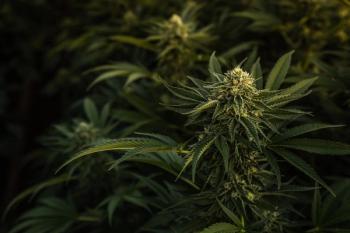
Cannabis for Neurodegenerative Disorders
In this blog installment, we take a deep dive into research on how cannabis affects neurodegenerative disorders such as Alzheimer’s disease, multiple sclerosis, and Parkinson’s disease.
Basics of Neurodegenerative Disorders
The information presented in this section comes from the Cleveland Clinics, a nonprofit academic medical center (1).
Neurodegenerative disorders (NDs) involve the gradual damage and destruction of nerve cells in the nervous system, especially the brain. Researchers estimate that neurodegenerative diseases affect more than 50 million people globally, and numbers are expected to increase dramatically into the future as the population ages.
There are several types of NDs. The most common include the following:
- Dementia-Type Diseases such as Alzheimer’s disease (AD) involve progressive damage to different parts of the brain, which causes neurons to die. This neuronal death can then cause a wide range of symptoms that vary depending on which areas of the brain are affected. Common symptoms of AD include confusion, memory loss, trouble thinking or concentrating, and behavior changes.
- Demyelinating Diseases such as multiple sclerosis (MS) involve the damage or loss of myelin, the protective sheath surrounding the axons and dendrites of neurons, which causes problems with the sending and relaying of nerve signals. Common symptoms of MS include tingling or numbness, pain, muscle spasms, weakness and paralysis, coordination issues, and fatigue.
- Parkinsonism-Type Diseases such as Parkinson’s disease (PD) involve damage to neurons in the brain that help manage coordination and precise control of muscle movements. Common symptoms of PD include slowed movements, shaking and tremors, balance problems, shuffling steps, and hunched posture.
- Motor Neuron Diseases such as amyotrophic lateral sclerosis (ALS), also known as Lou Gehrig's disease, involve the death of neurons that control movement. Symptoms include loss of muscle control.
While NDs are incurable, there are some treatments that help slow the progress of the diseases and/or treat associated symptoms.
It is believed that multiple factors contribute to NDs, including:
- Age: As you get older the chance of developing an ND increases.
- Genes: Many NDs are tied to genetics, that is, mutations that cause NDs are heritable.
- Environment: Such factors as exposure to noxious chemicals or pollutants, or certain infections may increase the risk of developing an ND.
- Medical History: Certain health events may cause or exacerbate the development of NDs.
- Lifestyle: Diet, exercise, and alcohol or tobacco use may all be associated with the development of NDs.
The Role of Oxidative Stress
There is increasing support for the notion that oxidative stress (OS) pays a crucial role in neurodegenerative disease. Briefly, here’s how that works: Brain activity creates highly reactive chemical by-products called reactive oxygen species (ROS). In healthy brains, there are sufficient supplies of antioxidant enzymes to counteract the production of ROS. However, when there is not enough antioxidant activity in the brain to counter the amount of ROS being produced, it causes OS, which eventually leads to cell death. And since neurons do not regenerate, neuronal death leads to neurodegeneration (2,3).
In addition to causing cell death, OS also activates a cascade of microglial activity (microglia are immune systems cells in the brain), leading to inflammation. In turn, the inflammation exacerbates OS, creating a “feed-forward loop” involving “chronic oxidative stress and persistent neuroinflammation.” In other words, “Persistent neuroinflammation and chronic oxidative stress play a crucial role in the pathogenesis of neurodegenerative diseases” (4).
What we have then is that the two underlying features of NDs are neurodegeneration and chronic inflammation (5).
Research on Cannabis and Neurodegenerative Disorders
Mechanisms of Action
There are a variety of mechanisms by which cannabidiol (CBD) can help address NDs (2,4):
- CBD may induce anti-inflammatory effects by acting as a CB2 receptor inverse agonist.
- CBD decreases the expression of proinflammatory genes by activating PPARg receptors.
- CBD exerts strong antioxidant effects.
- CBD dampens immune system activity by activating adenosine A2A receptors.
- CBD promotes neuroprotection by activating 5-hydroxytryptamine subtypes 1A (5-HT1A) receptors.
- CBD prevents mitochondrial dysfunction by decreasing both production of ROS and iron accumulation, which then reduces neurodegeneration.
- CBD inhibits fatty-acid amide hydrolase (FAAH), the enzyme that breaks down endocannabinoids—notably anandamide (AEA). This then promotes endocannabinoid activity that mediates neuroinflammation and dysfunction.
Beta Caryophyllene
In addition to containing secondary metabolites in the form of cannabinoids (that is, tetrahydrocannabinol [THC] and CBD), cannabis also contains another class of secondary metabolites, terpenes, which are responsible for the aromas found in cannabis. One such terpene, beta-caryophyllene (BCP), has been found to be a full agonist of the CB2 receptor, generating strong analgesic and anti-inflammatory effects. It follows that a combination of CBD and BCP should have interesting potential for treating NDs. And, indeed, preclinical studies show that joint administrations of CBD and BCP—using lower doses of CBD than those used in isolation—reduce both pain and inflammation by more than either CBD or BCP alone (6).
Clinical Studies: CBD, THC
Lacroix et al (2022) (7) provide a review of a number of small-scale clinical studies of the effects of cannabis on ND.
Alzheimer’s Disease
Seven small-scale studies of the effects of THC (using Marinol®, brand name for dronabinol, and Namisol®, brand name for nabilone, both synthetic forms of THC) on symptoms of AD found significant improvements in body weight, behavioral disorders, affect, sleep quality, agitation, and irritability.
Parkinson’s Disease
Four small-scale studies of the effects of CBD on symptoms associated with PD found improvements in dystonia, psychotic symptoms, sleep quality, and PD rating scale.
One small-scale study of smoking cannabis found no effects on reducing tremor, while another similar study found significant effects in reducing tremor and in improving both sleep and pain.
One small-scale study of THC (nabilone) found improvements in dyskinesia.
One small-scale study of combinations of THC and CBD (Sativex®, brand name for nabiximols, a cannabis extract containing equal amounts of THC and CBD) found no significant effects on PD rating scale.
Lacroix et al conclude, “Anyway, all studies demonstrate that there are no serious adverse effects. The main limitations to these findings are short study duration and small sample sizes. Another limitation may be due to the low bioavailability of THC and CBD in oral preparations.”
ALS
Two small-scale studies of the effects of THC (Marinol®) on ALS-induced cramps found no effects on cramps, sleep, appetite, depression, or quality of life. Researchers noted that the lack of effects may have been due to the short duration of treatment (2 weeks).
Two small-scale studies of the effects of combinations of THC and CBD (Sativex®) on ALS-induced spasticity found reduction of spasticity and “high treatment satisfaction.”
Lacroix et al conclude that “All these studies reported good tolerability of medical cannabis. Therefore, these modest but encouraging results suggest the need for further studies enrolling a higher number of patients.”
Surveys of Patients
Feeney et al (2021) (8) conducted an email survey of over 1,000 people with PD about their experiences with cannabis. The survey’s response rate was low (18%), so the results should be taken with a grain of salt. About one-quarter of respondents had used cannabis in the last six months.
Of the non-users, reasons for not using cannabis include lack of evidence of efficacy, fear of side effects, lack of legality, lack of need, and general disinterest. When asked what might influence them to consider using cannabis, the majority wanted evidence of efficacy and/or support by their health team to use cannabis.
Of the users, who tended to be slightly younger than non-users, reasons for use included symptom management and perhaps also recreational use. Users’ most common source of information was the internet/news and also either friends or others with PD. Most (64%) had not received a recommendation by their doctor. While most users (56%) did not have information on how to use cannabis, those who did have information acquired it from non-PD doctors (25%), dispensary staff (22%), or friends/others with PD (22%). Reported forms of use include spray/drops (29%), smoking (27%), and oral ingestion (19%). Most users did not know the concentration of cannabinoids—and thus dose size—for the products they were using. In the survey, 41%, reported improvements in motor symptoms, while 42% reported improvements in non-motor symptoms, anxiety, pain, and sleep.
Amtmann et al (2004) (9) conducted an online survey of 131 patients, mostly white males, with ALS. 10% of respondents reported using cannabis in the last 12 months. The majority of recent users (77%) had used cannabis earlier in their life before being diagnose with ALS, and just under half (40%) lived in a state where cannabis was illegal. “Respondents reported that the use of cannabis helped moderately for depression, appetite loss, spasticity, drooling, and pain.”
Conclusions
Neurodegenerative disorders affect a large and growing portion of the population, and they take a tremendous toll not only on patients, but also on healthcare providers, caretakers, and family members. NDs are complex; they each have distinct, multifaceted causes, together with a variety of different symptoms and effects. Currently, some treatments exist to slow the progression of these diseases and to treat some associated symptoms. Cannabis has the potential to be a significant new therapeutic for the treatment of NDs, since it has the ability to address a myriad of different contributors to the diseases, as well as many of the core symptoms and effects. There are clear mechanisms of actions for cannabis to help, and early, small scale clinical studies have confirmed the potential of cannabis to address several of the more prevalent symptoms.
References
- Neurodegenerative Diseases. Cleveland Clinics.
https://my.clevelandclinic.org/health/diseases/24976-neurodegenerative-diseases - Cassano, T., et al, From Cannabis sativa to Cannabidiol: Promising Therapeutic Candidate for the Treatment of Neurodegenerative Diseases. Frontiers in Pharmacology. 2020, Mar 6.
https://www.frontiersin.org/articles/10.3389/fphar.2020.00124/full - Ionescu-Tucker, A. and Cotman CW., Emerging roles of oxidative stress in brain aging and Alzheimer’s disease. Neurobiology of Aging. 2021, Jul 25.
https://pdf.sciencedirectassets.com/271067/1-s2.0-S0197458021X00103/1-s2.0-S0197458021002402/main.pdf ? [would this link be more accurate: https://www.sciencedirect.com/science/article/pii/S0197458021002402] - Bhunia, S., et al, Cannabidiol for neurodegenerative disorders: A comprehensive review. Frontiers in Pharmacology. 2022.
https://pubmed.ncbi.nlm.nih.gov/36386183/ - Iuvone, T., et al, Cannabidiol: A Promising Drug for Neurodegenerative Disorders? CNS Neuroscience & Therapeutics. 2009.
https://onlinelibrary.wiley.com/doi/epdf/10.1111/j.1755-5949.2008.00065.x - Blanton, H., et al, Cannabidiol and Beta-Caryophyllene in Combination: A Therapeutic Functional Interaction. International Journal of Molecular Sciences. 2022.
https://www.ncbi.nlm.nih.gov/pmc/articles/PMC9779834/pdf/ijms-23-15470.pdf - Lacroix, C., et al, What Do We Know About Medical Cannabis in Neurological Disorders and What Are the Next Steps? Frontiers in Pharmacology. 2022, Apr 27.
https://www.frontiersin.org/articles/10.3389/fphar.2022.883987/full - Feeney, MP., et al, Weeding through the haze: a survey on cannabis use among people living with Parkinson’s disease in the US. Nature. 2021.
https://www.nature.com/articles/s41531-021-00165-y - Amtmann, D., et al, Survey of cannabis use in patients with amyotrophic lateral sclerosis. American Journal of Hospice and Palliative Medicine. 2004.
http://ajh.sagepub.com/content/21/2/95
About the Author
Ruth Fisher, PhD, is a systems design researcher and analyst. She analyzes markets to determine how environments shape outcomes. She is co-founder of CannDynamics, and author of The Medical Cannabis Primer and Winning the Hardware-Software Game: Using Game Theory to Optimize the Pace of New Technology Adoption. Dr. Fisher has worked in the technology and healthcare sectors on behalf of technology companies, early-stage researchers, physicians, and technology start-ups.
Newsletter
Unlock the latest breakthroughs in cannabis science—subscribe now to get expert insights, research, and industry updates delivered to your inbox.





